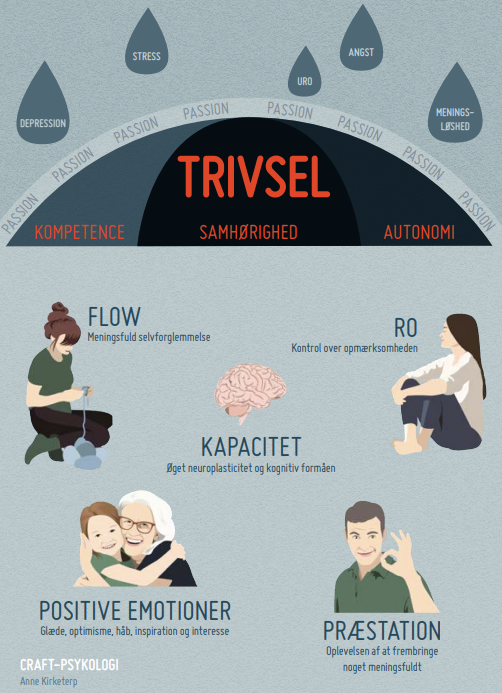THEORIES BEHIND CRAFT-PSYCHOLOGY
Craft-psychology is my vision of connecting craftsmanship and psychology.
It involves psychological theories that justify and describe crafting and its beneficial effects on our well-being and health.
In Craft-psychology, the physical and psychological benefits of engaging in handicrafts and craftsmanship are described. Various theories are incorporated to varying degrees. The theories that Craft-psychology predominantly aligns with are briefly outlined below.
Self-Determination Theory - Components for a Flourishing Life
Why is it important to have a passion? And how can we understand how our passion/hobby/interest can be used to create more well-being in everyday life?
Flow - Focus on the Activity
Complete immersion in what one is engaged in.
Flow occurs when one becomes so engrossed in an activity that they forget about thoughts, hunger, and time. Play is a good example of flow, and what we as adults play with often leads to the experience of flow.
It can be design processes, fishing, handicrafts, or other activities where there is a balanced challenge to skill ratio.
Effectuation
The theory of the next best step.
Mindfulness - Focus on the Present Moment
Conscious, non-judgmental awareness of what is happening in the present.
Mindfulness is the state that arises when we are consciously present in the moment. Although it sounds simple, it's challenging because thoughts about things we need to remember to do often occupy our minds.
It requires practice, which can be as simple as counting crochet stitches and simply accepting the thoughts that come, then consciously refocusing on counting.
Broaden & Build
The theory of positive emotions.

